(21) Gastrointestinal System: Salivary Glands, Esophagus, and Peritoneal Cavity
1/58
Earn XP
Description and Tags
Lecture 21
Name | Mastery | Learn | Test | Matching | Spaced |
|---|
No study sessions yet.
59 Terms
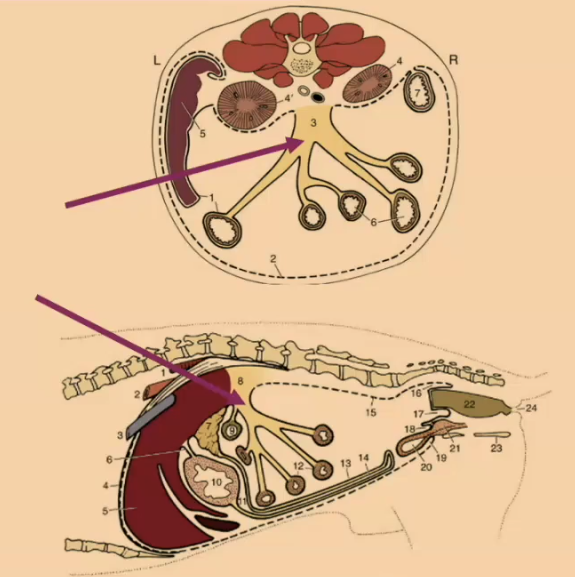
Mesentery
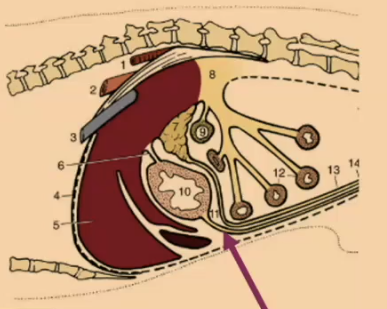
omentum
What is the peritoneum that supports the stomach?
Omentum
What is the term for closer to the mouth in general visceral topography?
Proximal
What is the term for away from the mouth in general visceral topography?
Distal
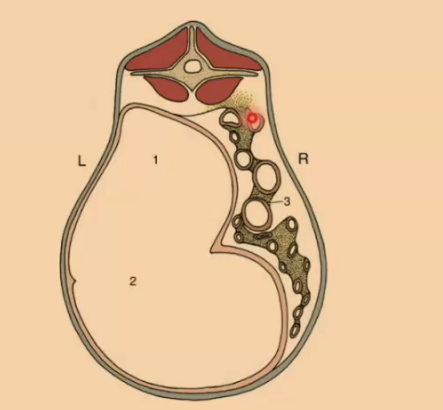
What type of animal’s abdomen is being shown? What is the majority of space taken up by?
Ruminant, rumen
What is the name for glands found within the mouth or outside the mouth to produce mucous or serous?
Salivary Glands
Which size of glands are found on the outside of the mouth and what fluid are they producing?
Larger glands- serous fluid
What type of enzymes do the large salivary glands produce?
digestive enzymes
Which glands are apart of the larger salivary glands?
parotid, zygomatic, mandibular, sublingual
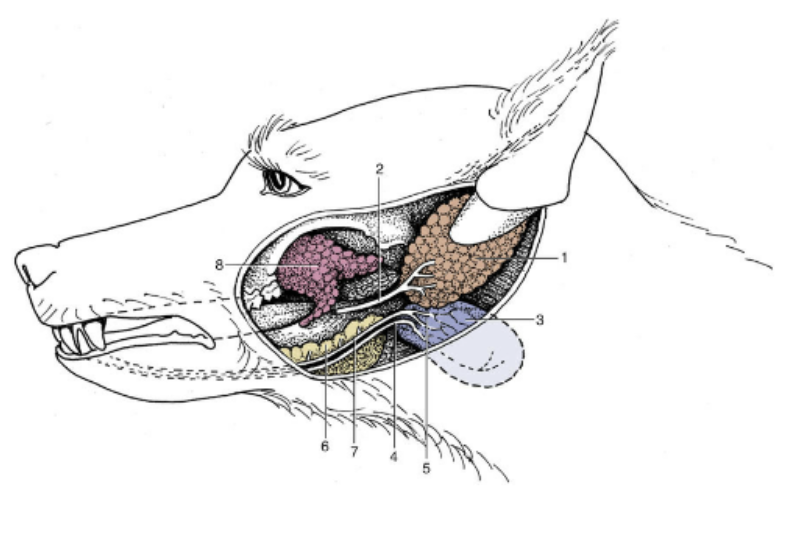
Which gland is shown by #1?
Parotid Gland
Which gland produces mostly serous saliva, is larger in herbivores, and is a very productive gland?
Parotid Gland
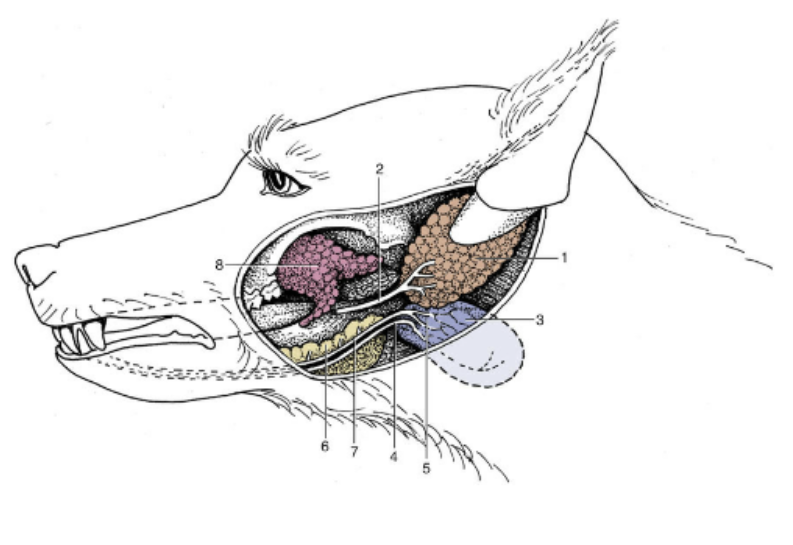
Which gland is represented by #8?
Zygomatic Gland
What is the name for the zygomatic gland in the herbivores?
Dorsal Buccal Gland
What type of secretions does the zygomatic gland have?
A mix of serous and mucous
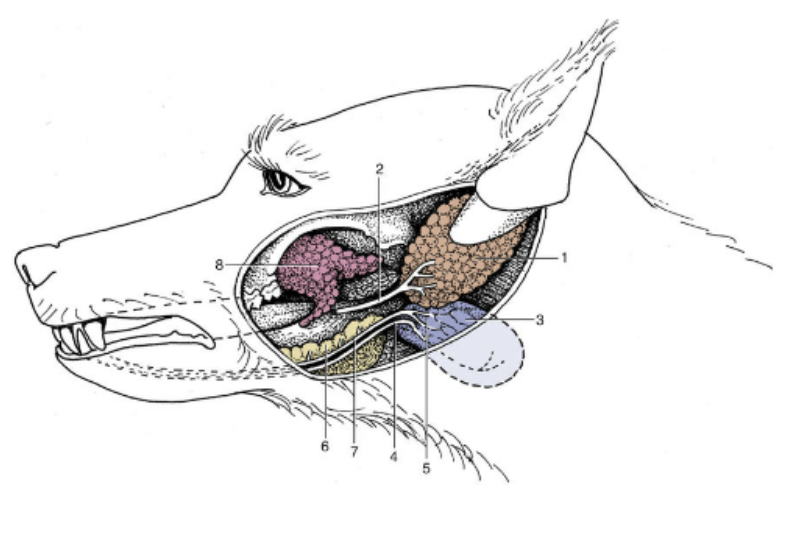
Which gland is represented by #3?
Mandibular Gland
Is the mandibular gland larger or smaller in herbivores?
Larger
Which gland is larger, the parotid gland or the mandibular gland?
Parotid Gland
What type of saliva is produced by the Mandibular Gland?
Both mucous and serous saliva
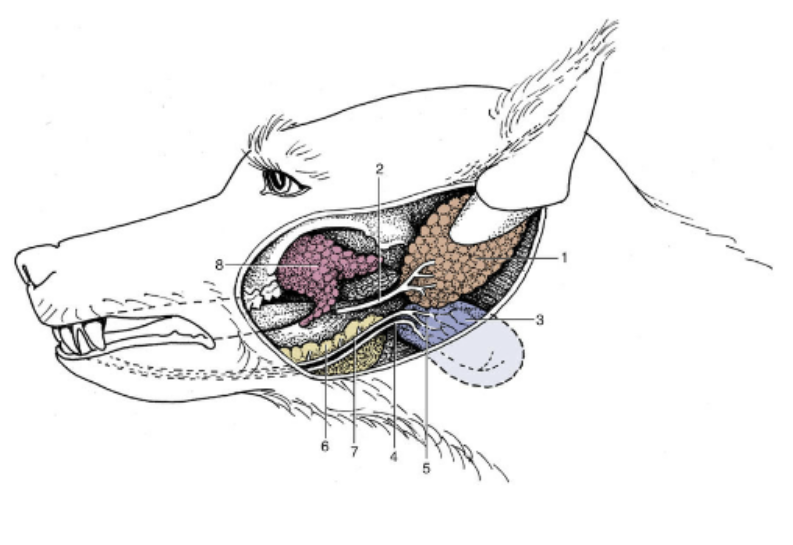
What is represented by 6/7?
Sublingual Gland
What type of saliva is produced by the Sublingual Gland?
Both mucous and serous saliva
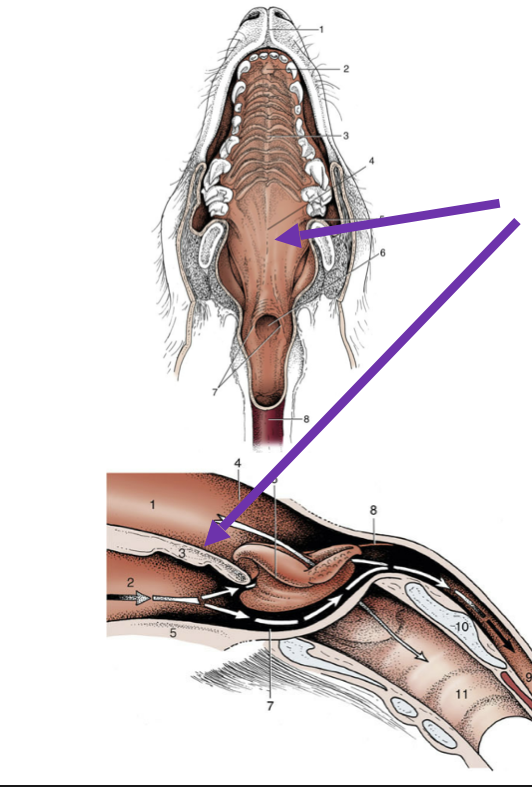
Soft Palate
What does the soft palate separate?
Nasopharynx from oropharynx
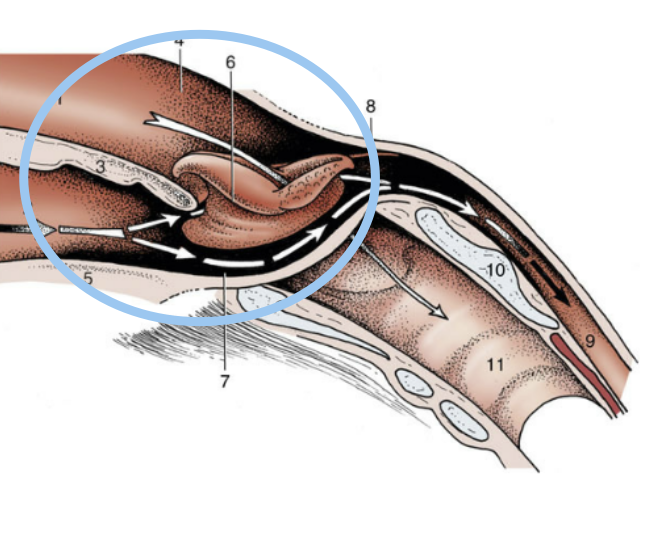
Pharynx
What location is where the GI tract and respiratory tract begin to cross over?
Pharynx
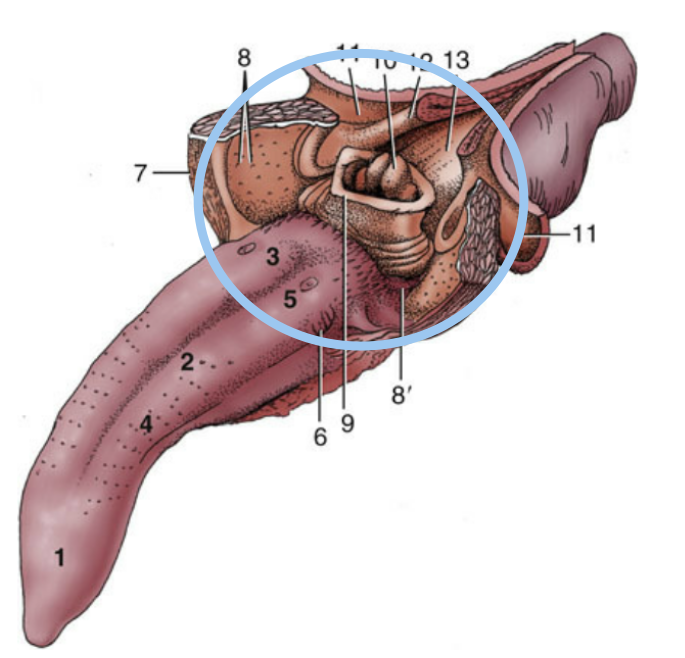
Pharynx
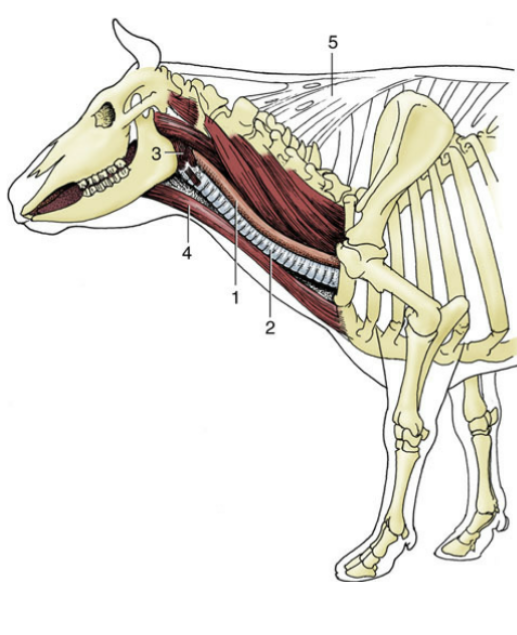
#1?
Esophagus
Where does the esophagus enter the stomach?
Cardia
The Esophagus runs within the __________ of the thorax and goes through the ________ into the abdomen.
mediastinum, diaphragm
What is the term for where the esophagus goes through the diaphragm?
Esophageal Hiatus

What is shown?
Esophagus
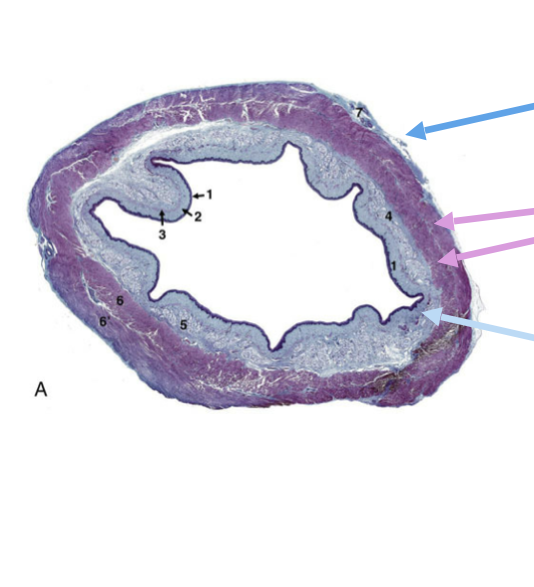
Dark blue arrow (7)?
Outer connective tissue (serosal)
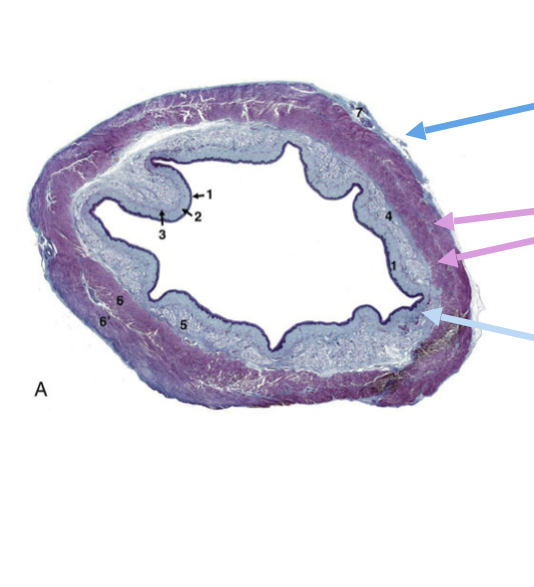
Purple arrow (6/6’)?
Middle Muscular Layer (2)

Light blue arrow (1/2/3)?
Inner Mucosal layer
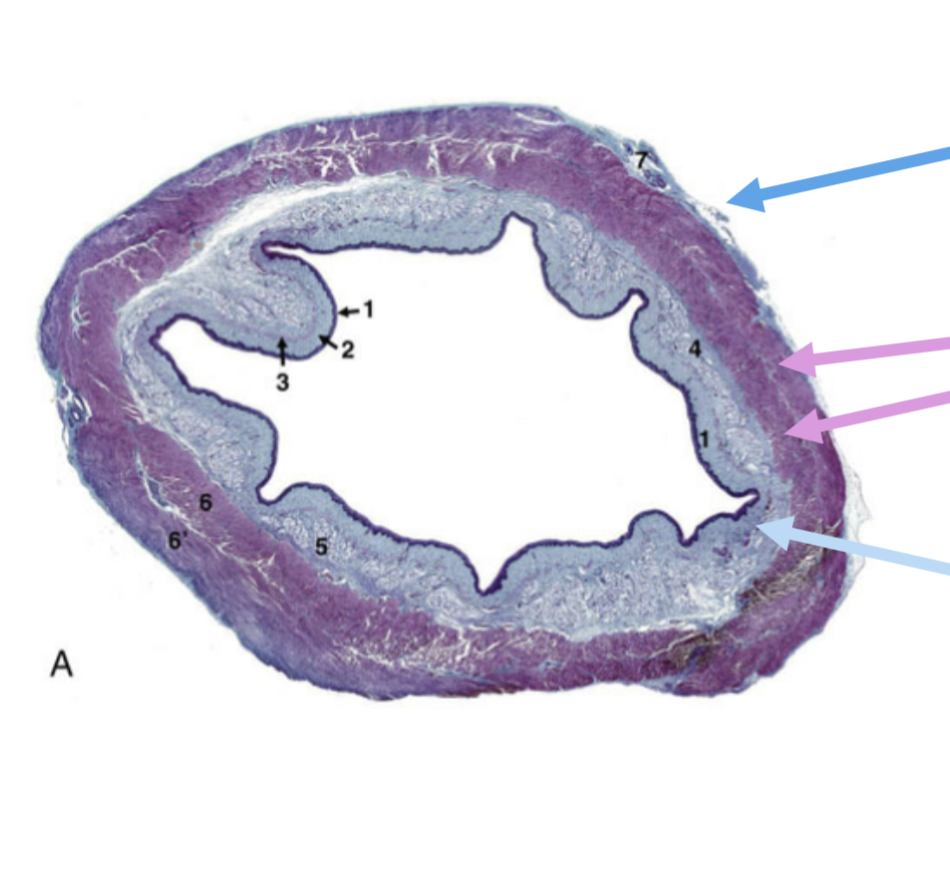
What is represented by the 1 within the Inner mucosal layer? 3? 4/5?
1: Inner mucosa
3: Middle muscular
4/5: Outer submucosa
What does the esophagus often do when it does not have ingesta in it?
Collapsed

#1?
Inner Mucosal Layer
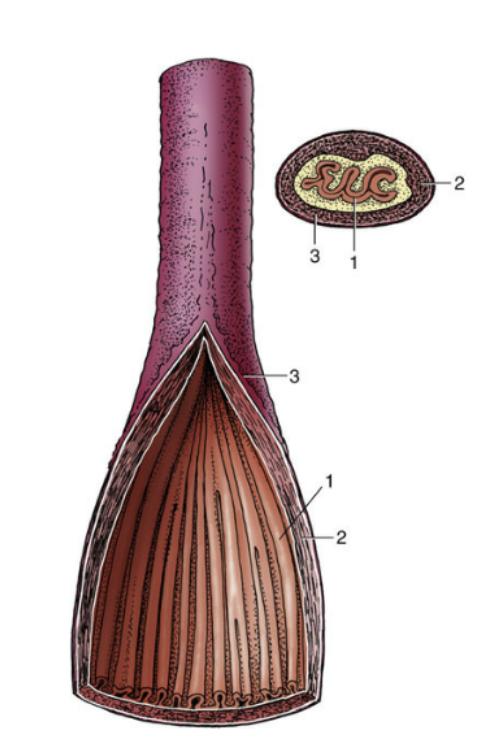
#2?
Middle Muscular Layer
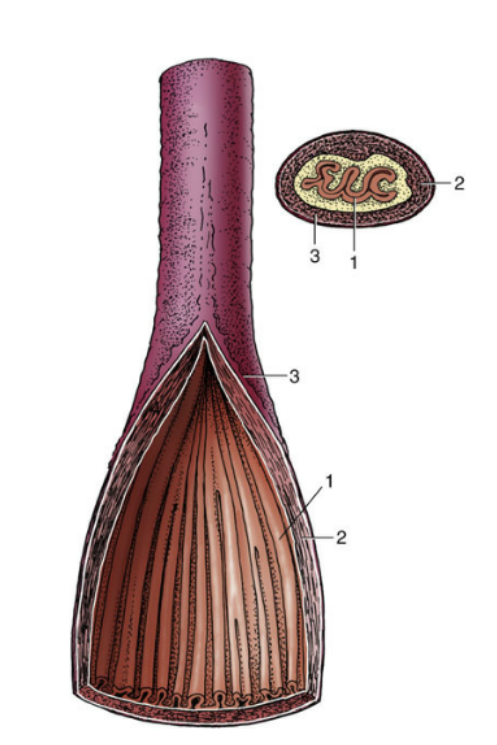
#3?
Outer connective tissue (serosal)
What does patent mean?
Always open
What is the term for swallowing?
Deglutition
Deglutition is _____ while food is in the mouth, then it becomes ________.
Voluntary, Involuntary
What is the term for rhythmic contractions of the esophageal muscles?
Peristalsis
The Abdominal cavity is cranially covered by _____ ___, and caudally surrounded by the _________ muscles.
caudal ribs, abdominal muscles
Which cavity in the abdominal cavity is surrounded by a delicate serous membrane?
Peritoneal cavity
What is the delicate serous membrane called in the peritoneal cavity?
Peritoneum
What is the term for organs within the peritoneal folds?
Intraperitoneal
What is the term for the organs adhered directly to the body wall?
Retroperitoneal
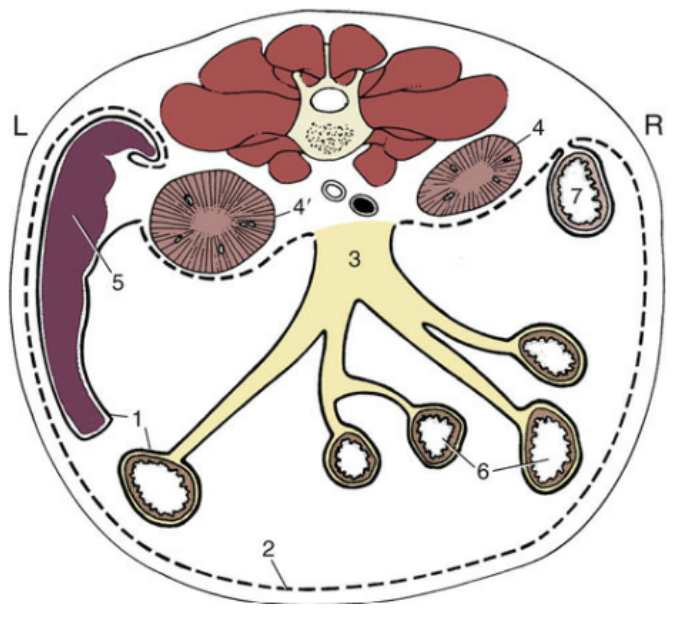
What is represented by the dotted and solid line in this image?
Peritoneal Cavity

What is represented by the dotted line in the image of the peritoneal cavity?
Parietal Peritoneum
What is represented by the solid line in the image of the peritoneal cavity?
Visceral Peritoneum
What is often stored under the peritoneum?
fat
What is the fluid between the peritoneum and organs for?
lubrication
What is the name for the peritoneum folded on itself?
Mesentery
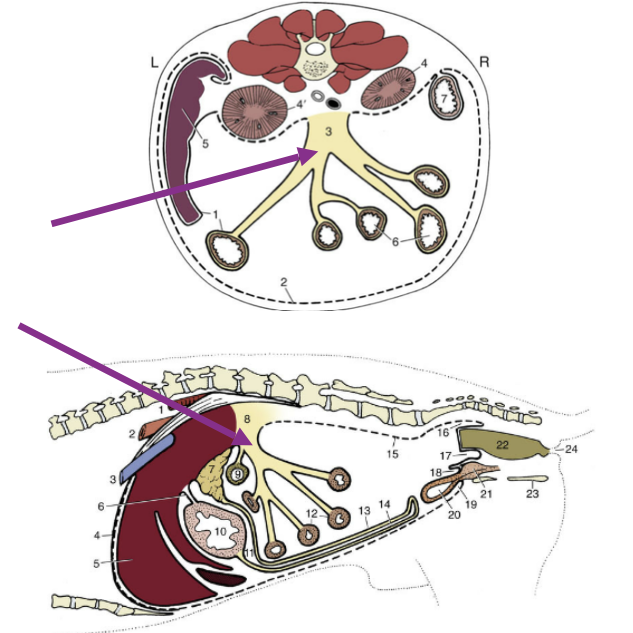
Mesentery
What does the mesentery house?
fat, viscera, supplies blood to viscera
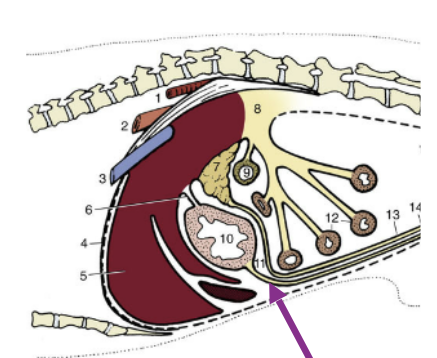
Omentum
What type of omentum is in small animals?
lacy
What type of omentum is in large animals?
solid